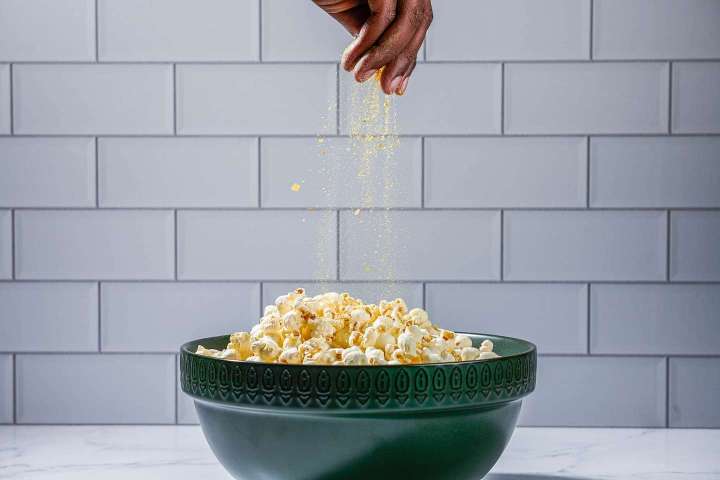While “nooch” is a relatively new term, nutritional yeast has been around for decades. According to NPR, the product hit shelves in 1950 and became popular with hippies in the late 1960s and 1970s. Since then, nooch has been a prized ingredient among people who adhere to plant-based diets for its umami-rich flavor and as a source of essential nutrients. And in more recent years, its fandom has spread to eaters of all diets and has even led to merch that lets people to declare their love with the words “Nooch Life” or “Dear Nooch I Love You” emblazoned across their chest.
Nutritional yeast tips and recipes for the umami-rich seasoning

If you’re curious about why this ingredient should be added to your pantry or how to use the supply you already have, here’s what you need to know about nutritional yeast.
Nutritional yeast is an inactive form of the yeast species known as Saccharomyces cerevisiae. (The active species is the same one used to produce bread, beer and wine.) The yeast is deactivated through a heating and drying process that gives it a toasty, nutty flavor and leaves it in thin, flat sheets that are ground into a powder or broken into flakes (which have a slightly unsettling resemblance to fish food).
“As its cells die, the proteins that made up its cells break down and amino acids like glutamic acid, which is naturally found in many fruits and vegetables, are released,” Alicia Kennedy writes in Serious Eats. It’s this glutamic acid, also called glutamate, that is responsible for nutritional yeast’s umami flavor and explains the comparison it often gets to Parmesan cheese, another umami-rich food. While I do get hints of cheesiness, I also find nutritional yeast reminiscent of roast chicken, as if the skin has been dehydrated and put in a shaker bottle.
While some deny the cheese comparison when it comes to flavor, the analogy to Parmesan is apt for how it can be used, which is to say that it can be added to anything. And in comparing it to another umami-rich seasoning, MSG, nooch does not contain any sodium and can be used in larger quantities. It’s perhaps best known as a seasoning for popcorn or as a crucial ingredient in many vegan mac-and-cheese recipes. You could also sprinkle it on roasted vegetables, use it in salad dressings or add it to boost the umami in soups. (Note that it also acts as a thickener.) Tim Chin for Serious Eats discovered that, beyond adding flavor, it also works as a dough relaxer, improving the elasticity in his recipe for hand-pulled lamian noodles.
And as its name implies, it is in fact a good source of nutrients. “A quarter cup of nooch, which has 60 calories, provides more protein than a large egg and is packed with fiber and an array of B vitamins and minerals. It is often fortified with vitamin B12, which is especially important for vegans because this essential nutrient is primarily found in animal products,” Ellie Krieger writes.
Nutritional yeast is available in many supermarkets, health stores and online. It should last for up to two years when stored in an airtight container in a cool dark place, such as a pantry (refrigerate it for a slightly extended shelf life). You can tell it has expired if the color shifts from pale yellow to a darker brown and/or it starts to clump together. Here are some recipes to use it up before you get to that point.
Vegan Broccoli Mac and Cheese. Nutritional yeast, miso and mustard pack this cashew-based “cheese” sauce with nutty, deep and sharp flavors.
Maple Mustard Tofu. A combination of cornstarch, nutritional yeast and dried herbs coats the tofu before it gets roasted in the oven and then tossed in a maple-mustard sauce.
Chickpea Omelets With Mushrooms, Spinach and Tomato. Nooch and turmeric are responsible for the color and earthy, nutty flavor in these eggless omelets.
Collards and Quinoa. This recipe relies on nooch to add cheesy umami to collard greens mixed with onion, sun-dried tomatoes and pine nuts.
Crunchy Nut and Seed Clusters. Coconut aminos and nutritional yeast team up in this recipe to make these crunchy clusters extra savory and rich with umami.






